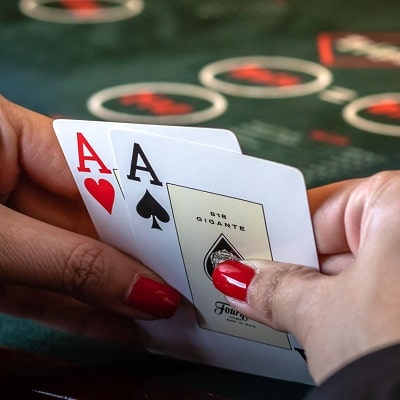
Strategy Poker
Before discussing strategy in poker, it’s worth understanding that there is no certain winning plan. And you can’t take one scheme and always win with it. The fact is that poker is a unique game and played by individuals. That’s why everyone creates a strategy to suit themselves and their opponents. But it doesn’t hurt to learn the basic rules of the game of poker and the nuances that allow you to win more often.
Poker etiquette
The basic rules of etiquette include the following guidelines:
- There is no need to draw attention to oneself during the game. The poker player should be calm and composed. Comments to other participants or spectators are not permitted. If really necessary, this can be done after the game.
- Chips and cards should always be on the table during the game. The point is that attempting to put your hands under the table can amount to cheating. Such a blow to reputation known players never allow themselves.
- Chips should be carefully moved towards the dealer. It’s uncivilized to throw them in his direction. The same goes for cards.
- Never discuss your cards with other players and brag about them. Firstly, it’s a sign of bad manners and secondly, it reduces your chances of winning.
- Restraint and emotional control are essential to success. There’s a reason for the expression poker face. It implies the complete absence of emotion on the face in all situations. It’s better to keep your joy or frustration to yourself. You can let your feelings go after the game is over.
- The order of play should always be strictly respected. Players should move in a clockwise direction. It is never necessary to step out of line, try to bid early or take a card before another player. All this will not paint the poker player and is simply rude.
- With the right amount of luck, a player can win a large sum of money. In such a case, a sign of good manners is to tip the dealer well.
- Every great player has his own unique image. It should not be copied from others. Every player should be an individual and different from the rest.

It is important to know that, according to official statistics, most victories are based not on a good card combination, but on a player’s clever bluff, with which he is able to confuse his opponents.
There is the standard bluff, whereby a player with bad cards intentionally raises his bets or calls them. Then there is the half-bluff. This is when the player with a bad combination raises his bet. There is a better chance, because there is a higher chance of catching other bluffers.
All of these actions make the other players think twice. They get confused and don’t know what they should do. However, true professionals rarely use such tricks. After all, they behave with confidence straight away. And besides, other professionals can pick them out, and they can’t win.
To determine when your opponent is bluffing, you need to understand exactly what combinations he may have. The only way to do this is to use the fundamental theory. Its essence is to calculate the possible cards in your opponent’s hands. And with a theoretical chance that your cards are better, you can try bluffing. That’s just the way it’s done by beginners who don’t fully understand the game.
It is equally important to be able to identify your opponents’ emotions. Even the slightest movement can reveal a player’s real position. It is also worth paying attention to the opponent’s actions in certain situations: when he raises the bet, when he passes, and so on. All this will allow you to develop your own strategy and use it successfully during the game.
